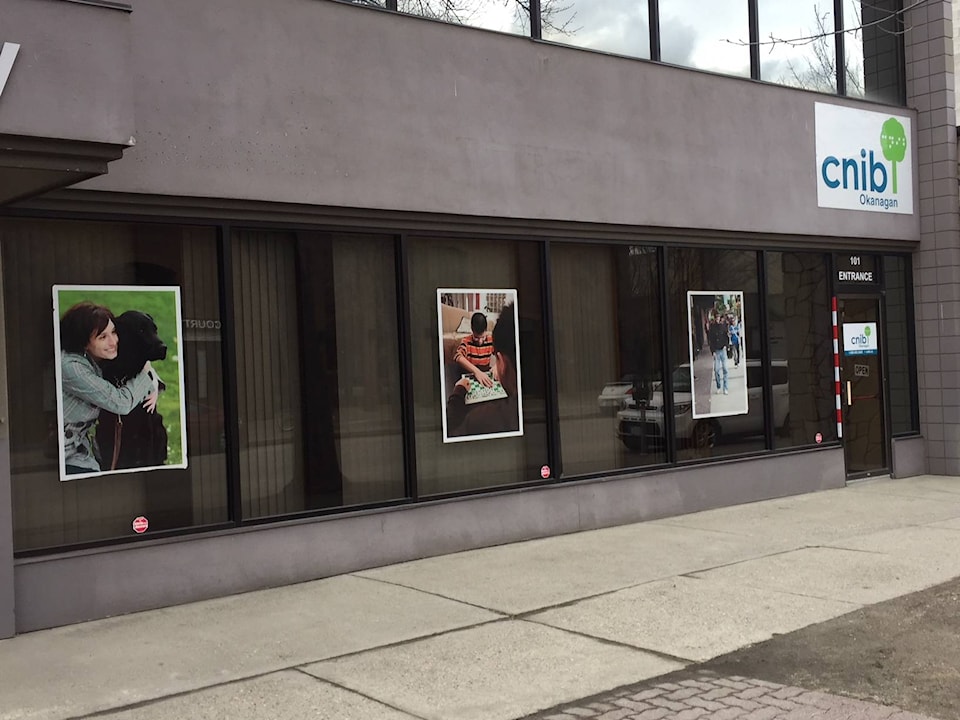Technological advancements have not only connected humans with one another around the world, but have opened up a world of opportunity for those who have low-vision or are blind.
As technology advances and prices rise, the technological aids become inaccessible, according to Darren Stallnecht, assisting technology specialist at the Canadian National Institute for the Blind.
Related:VIDEO: B.C. Transit shows off NextRide bus technology
Stallnecht sits with people who need assistance in learning how to utilize the tools available at different price points. Most recently he’s been working with clients to alter their cellphones to become portals to independence.
“Apple products are exceptionally accessible, all I have to do is press the home button three times, and it goes into accessibility mode. Nowadays I work mostly with iPhones and iPads. Once they have Voiceover turned on that comes on every iPhone and allows me to activate it and goes over everything on my screen; so I can go through the menu and find what I need easily,” Stallnecht said.
The different ranges of video magnifiers, screen reading programs, screen magnification software, and magnifiers with lights on them range from $10 to thousands of dollars. Smartphones alone are priced in the thousands and monthly data plans that are necessary to run the apps that are compatible in accessibility mode create an even larger hole in the pockets of those with low-vision or blindness.
Related:Blind Kelowna athlete wins grappling gold
“You can’t go to Walmart and get one (of the desktop magnifiers). The market for equipment that is designed for blind people is limited, or so the manufacturer’s tell us,” Stallnecht said. “Electronic braille machines where the six dots are controlled by a little motor with refreshable braille, where they have little pins operated by a little motor that controls each pin so it’s a really expensive piece of equipment.”
The different apps that are compatible with accessibility mode are giving those that need to use the CNIB services the chance to save some money and not be weighed down by several different tools.
Related:B.C. airports aiming to adapt to technological demands
The city of Kelowna has been increasingly more accessible according to Bobby Weir, regional manager for the southern interior at CNIB, who just moved to Kelowna a year ago with her family.
“With my cell phone and my guide dog I am completely independent. I can walk down the street, go anywhere with technology,” Bobby Weir, regional manager for Southern Interior at CNIB said.
Weir is a champion of technology and enjoys the independence it brings her, along with the help of her guide dog. She commutes to work everyday from West Kelowna to the downtown CNIB office using the bus to get around. However Weir refuses to cross the busy Highway 97.
Related:Kelowna transit to adopt NextRide technology
“Crossing 97 is a little scary, I would love to be able to walk to the Boucherie Exchange across from where I live but I could not, as good as my mobility skills are I am not at all comfortable crossing Highway 97,” Weir said.
The Accessible Pedestrian Signals are installed as per request, and most central areas of Kelowna already have them installed at 60 intersections. By simply holding down the button for three seconds pedestrians will activate the audio signal and be able to cross the street with more confidence.
“One of the things we are really focused on as a council is making the city accessible to everybody. It should be a place where everyone feels safe and feels like they belong,” Mayor Colin Basran said.
Related:CNIB promises to respond to criticism
“Being able to support people going through vision loss, some are new, some of them continuing to lose their vision over time, like me, some of them through immediate vision loss due to accident or illness. It was exciting (work), it was healing for me as well and I really connected with people on a much deeper level because we had a lot in common,” Weir said of her work.
To report a typo, email:
newstips@kelownacapnews.com.
@sydneyrmorton
sydney.morton@kelownacapnews.com
Like us on Facebook and follow us on Twitter.
